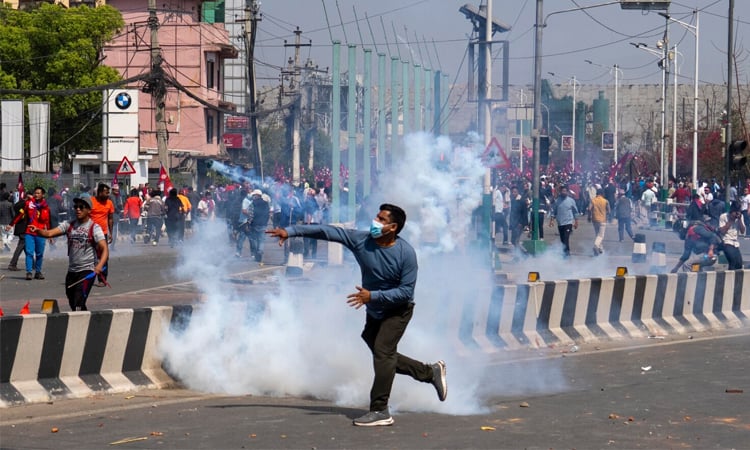The recent pro-monarchy protests in Nepal have brought fresh concerns about media bias and misinformation in South Asia. Since March 9, 2025, demonstrations have taken place across Kathmandu, calling for the return of the monarchy and the reestablishment of Nepal as a Hindu nation. However, critics say the reporting of these events by both mainstream and social media has lacked balance and factual accuracy.
Protesters gathered to welcome ex-King Gyanendra Shah upon his arrival at Tribhuvan International Airport on March 9, sparking weeks of rallies and unrest. The situation escalated on March 28, when clashes at Tinkune and Koteshwor resulted in vandalism, looting, and property damage.
Rise of Misinformation on Social Media
Many Nepalis turned to YouTube and other social platforms for live event coverage. While some independent reporters aimed to present real-time updates, others prioritized sensational headlines and exaggerated claims to increase subscribers and views. These content creators work within YouTube’s policies but remain largely outside Nepal’s media regulations — unless their content promotes hate or violence.
The trend has raised alarms as misinformation spreads rapidly, leaving the public confused about what’s actually happening on the ground. Authorities have warned of legal action under Nepal’s cybercrime laws for those inciting unrest online.
Mainstream Media Under Fire
Mainstream media outlets in Nepal have also faced criticism for biased and selective coverage. National news platforms, often seen as favoring the ruling government, reportedly downplayed protest numbers and avoided broadcasting the public’s dissatisfaction. Private television channels, closely linked to various political parties, reflected their patrons’ positions rather than delivering neutral news.
Viewers have become increasingly aware of these divides. “People now easily recognize which channel serves which political agenda,” said a Kathmandu-based media analyst, who wished to remain anonymous.
Foreign Media Sensationalism
Adding to the controversy, Indian media outlets covered the pro-monarchy protests with their own political slant. Several corporate channels sent correspondents to Kathmandu, focusing heavily on the monarchy revival narrative. Many viewers felt these reports overstated the size and significance of the movement.
Observers noted that some Indian outlets tried to link the Nepalese rallies to India’s far-right Rashtriya Swayamsevak Sangh (RSS) ideology. One protester was even seen carrying a placard with a photo of Yogi Adityanath, the Chief Minister of Uttar Pradesh, sparking embarrassment among local monarchist leaders.
Public Frustration Fuels Unrest
Despite media distortions, the roots of the protests lie in growing public frustration with Nepal’s political leadership. Since the end of the monarchy in 2008, the country has struggled with political instability. The major parties — the Nepali Congress, CPN-UML, and CPN (Maoist Center) — have been accused of power-sharing deals, corruption, and neglect.
High inflation, youth unemployment, and a sluggish economy have pushed thousands of Nepalis to seek work abroad. Many believe the democratic system has failed to deliver on its promises. “People are ready to support anyone who challenges the current system,” said Rajan Thapa, a political observer in Kathmandu.
This political uncertainty echoes the rise of the Maoist insurgency in the 1990s, which began as a rebellion against similar government failures.
Need for Credible, Ethical Media
As misinformation and politically biased reporting increase, experts stress the importance of reliable and neutral journalism in Nepal. The public often struggles to find trustworthy sources that uphold the media’s role as the “fourth pillar of democracy.”
“The lack of professional, factual reporting weakens public trust in both government and media,” said a lecturer from Tribhuvan University. He called on stakeholders to address the growing problem of media-manufactured narratives.
Without corrective action, misinformation risks deepening divisions and further destabilizing the country’s fragile political environment.


